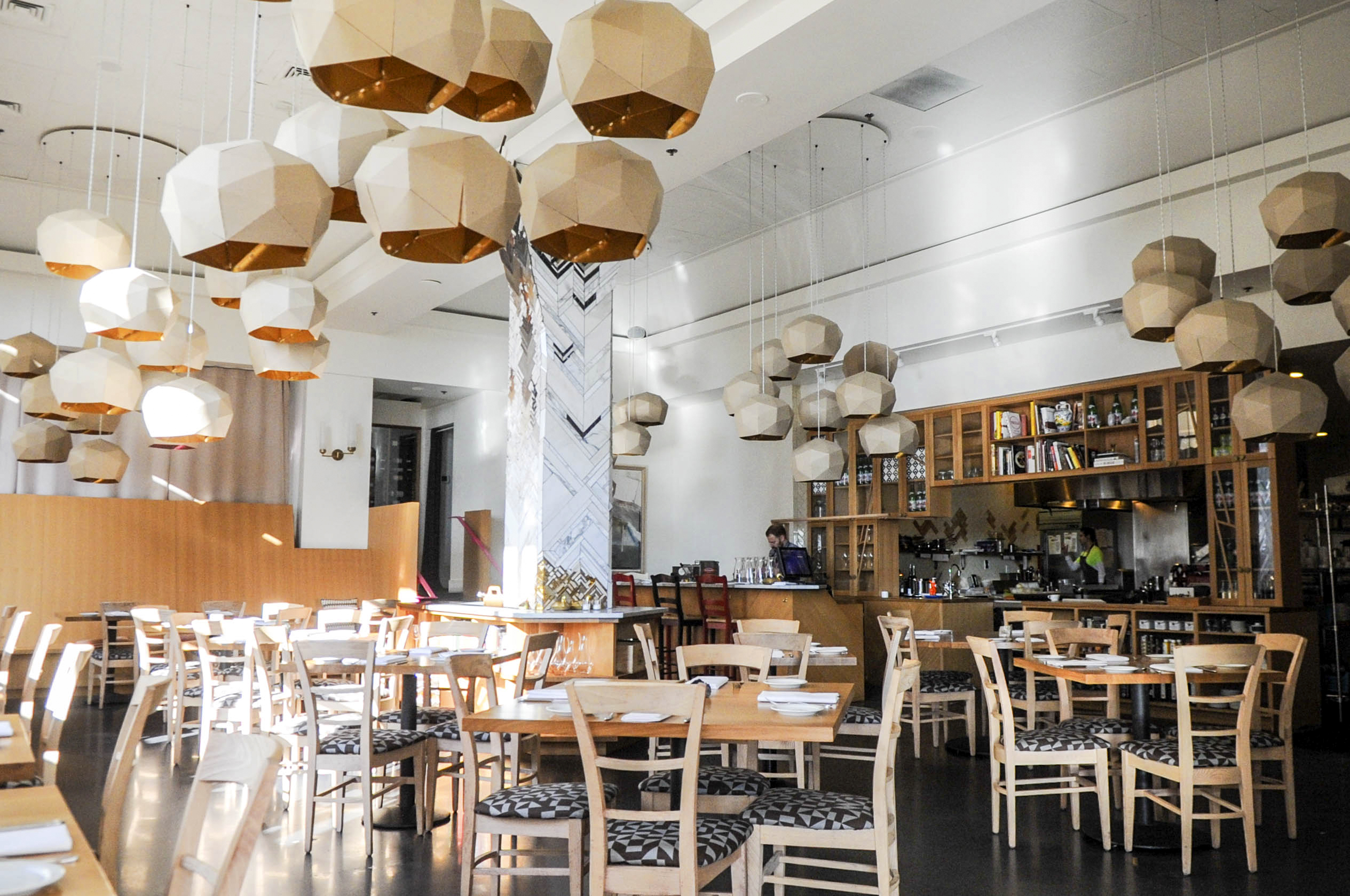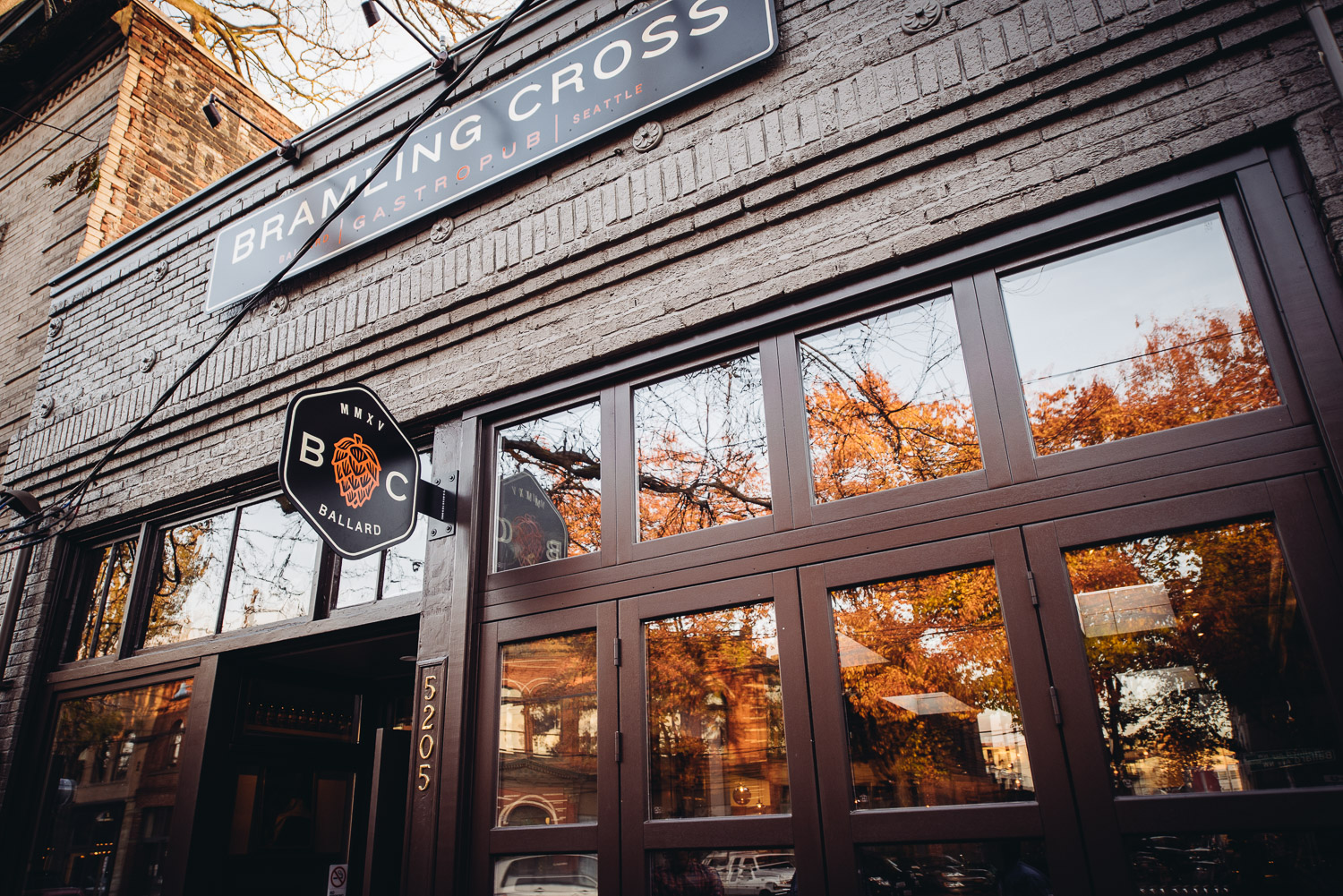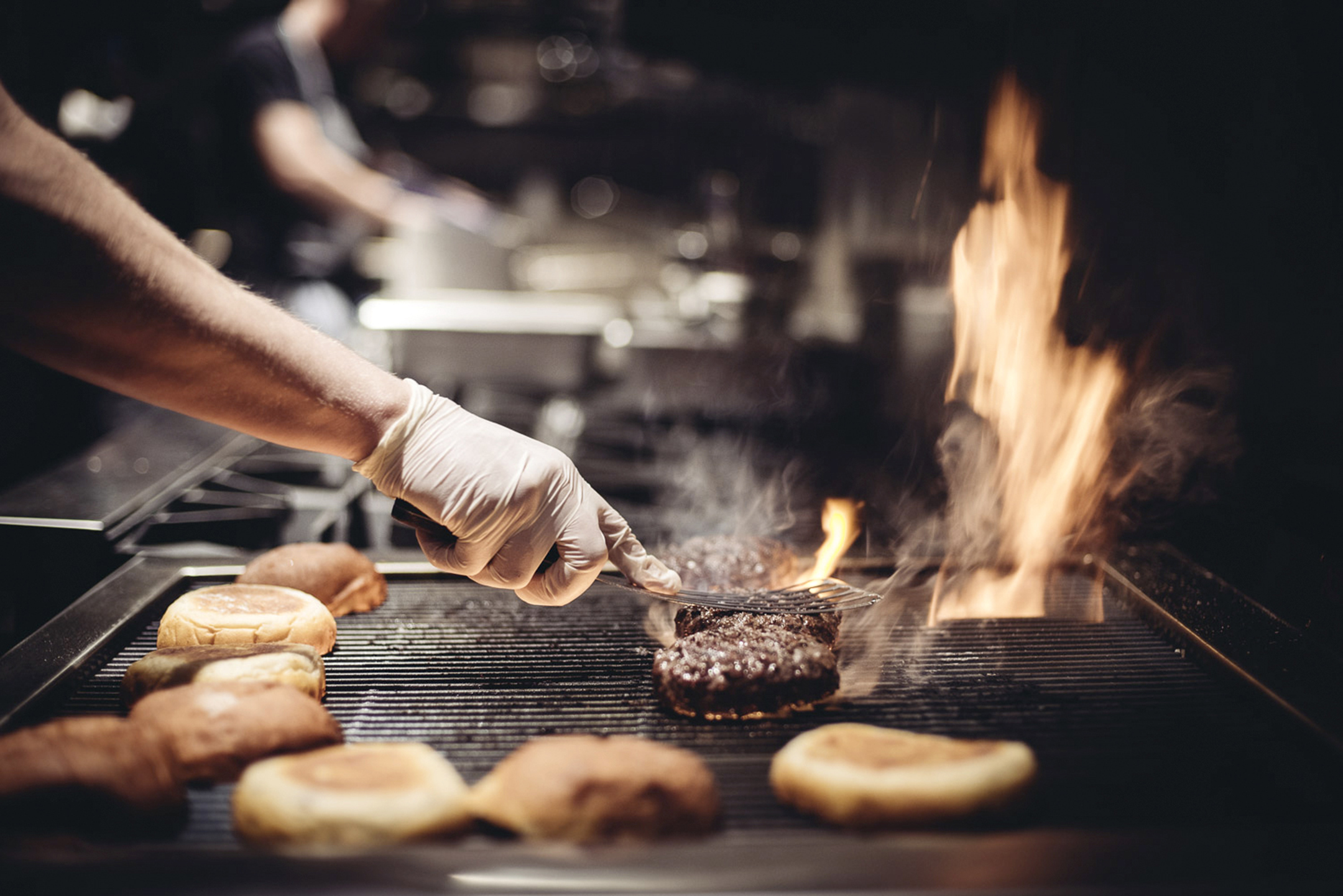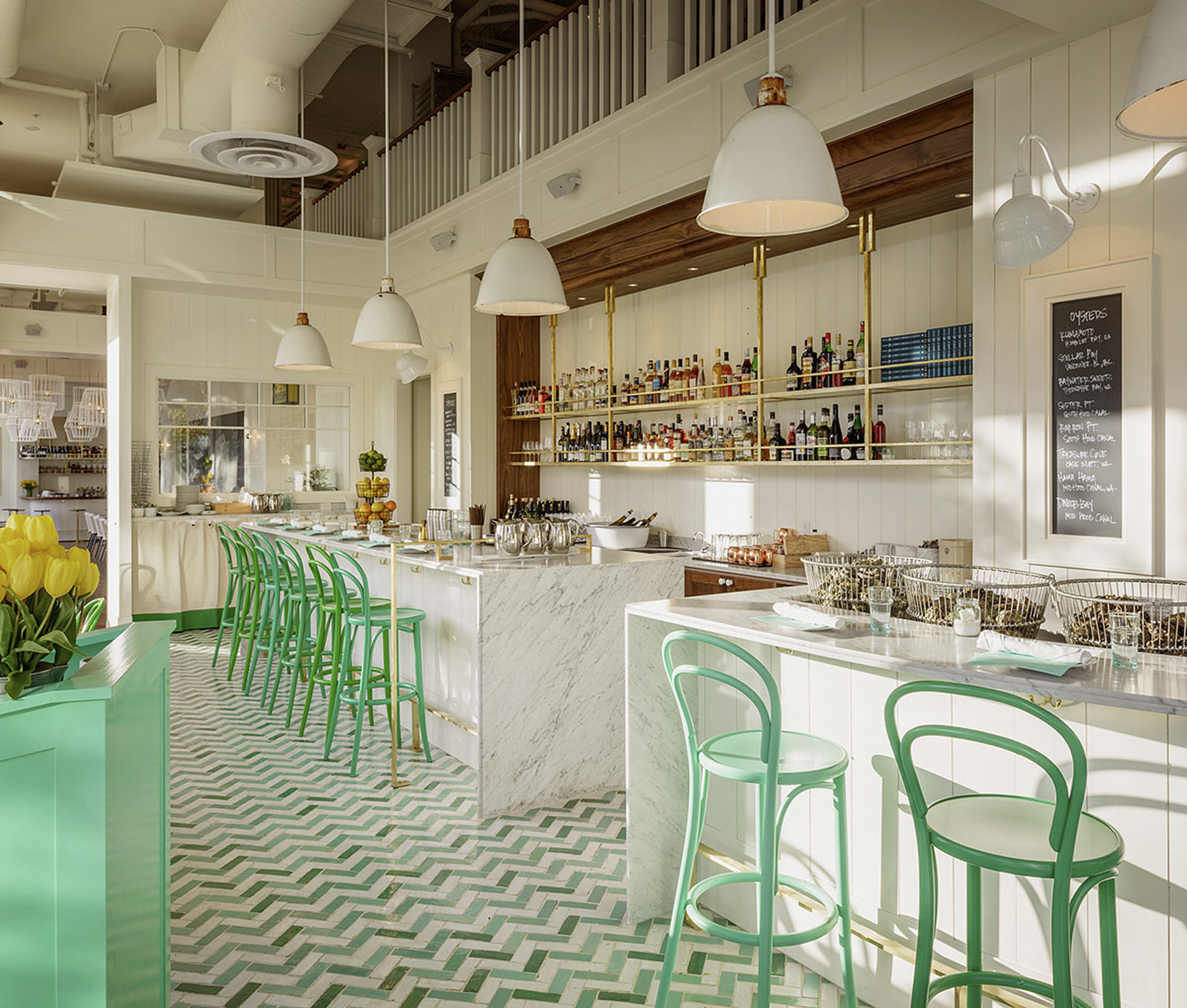Hommage has big clogs to fill in the Seattle culinary world. Taking over the space of the venerable Book Bindery, which closed last summer after a five-year run catering to the moneyed set, it opened this fall under the direction of executive chef Nico Borzee of Seattle’s Artusi, and Michelin-starred restaurants in France and San Francisco. However, it remains in the Book Bindery/Canlis stratosphere, offering a more refined style of service that’s swiftly dying in our multiplate, feasting-and-sharing, cocktail-bar-and-snacks restaurant culture. Waiters hover to replace forks, refill water glasses, and intricately explain the menu, albeit with a down-to-earth, accommodating vibe. Its interior still offers views of the canal along Nickerson Street, a beautiful wooden ceiling, and a large, glassed-in room full of casks of wine.
As for the food, I’m of the persuasion that a restaurant’s bread service is a determining factor in what’s to follow (though with so many good bakeries in town, it’s becoming increasingly easy for even mediocre restaurants to serve delicious baked goods). Hommage offers Columbia City sourdough with two butters: one cultured in a charred corn husk, another infused with black truffle. Both were chilled buttery bliss, and not surprisingly you’re charged $5 for it. That decadence set the tone for the rest of the meal, and while excited by the pageantry, I was also mildly burdened by it.
A starter of chestnut soup (chataigne) was frothy (almost a foam) and unadulterated in its nutty sweetness; it doesn’t really need the tiny dollop of foie gras custard at the bottom, especially since our sauteed chanterelles, topped with one perfect sheet of fried-sage pasta, came with spoonfuls of creamy lemon ricotta. That, however, was a pairing choice we made, and easily could have averted. Moving forward, trying to lighten the meal would prove more difficult.
I was intrigued with the idea of their salmon: cold-smoked, with a 35-minute poached egg and house vodka creme fraiche. Unfortunately, the salmon itself was not as fresh as it should have been, and scant in portion. That left me with an egg hidden in a nest of shredded filo dough, presumably to add texture, though it was reminiscent of a mouth full of shredded wheat. The smear of creme fraiche on the bottom of the plate turned it all into a mighty mess, minus flavor. Our black cod poached in kombu and matsutake dashi, though certainly a departure from heavier dishes, didn’t fare much better: It came severely undercooked. To the chef’s credit, he admitted the error and sent a new one done properly. But unfortunately, the beautiful broth they coax out of the seaweed and loamy, naturally cinnamon-laced matsutakes doesn’t infuse the fish, which was bland and on the slimy side. We left a large chunk of it, but slurped up every drop of the dashi.
At this point, food was coming at an alarmingly quick pace, which felt counterintuitive to the fine-dining French experience. If I closed my eyes, I might have have been at Damn the Weather or Single Shot or any of the many trendy cocktail bars that send out food like extra balls in a pinball machine, fast and unpredictably—which is fitting in those places but not at this one. By the time our seared duck breast arrived, our table was filled to within an inch of its life, as were our stomachs. How then would we attack the massive amount of duck set before us—served as two hulking chunks with equally large, delicious parsnips and and a poached persimmon the size of a fist swimming in a chestnut butter sauce? I suppose the chef felt that a $34 entree deserved a sizable portion, but I want my portions curated—even if that means getting a little less—if it makes sense for the dish. Though cooked perfectly, the duck was quite salty and had a smoky flavor that reminded me of bacon or sausage. My favorite part of the plate was that mango-flesh-colored persimmon, its sweet, almost floral meat an intriguing vehicle for poaching.
It’s very clear that Borzee knows his way around a French kitchen, and this young chef’s ability to achieve heightened flavors and small moments of culinary clarity speak to his potential. My optimistic guess is that he’s still figuring it all out, and I’ll certainly be back to see where he lands.
Meanwhile, over at Vespolina, Jason Stratton has also repurposed a former restaurant—his own Aragona, an ambitious Spanish spot that closed only eight months after opening—into another of his Italian collection, joining Spinasse and Artusi. Since Aragona was open for such a brief time, a vast majority of diners won’t be oddly reminded that Vespolina’s focal white mosaic tiled column with glittering bursts of gold and red was originally installed as an ode to Moorish culture. They will simply be, for the most part, expecting good pasta. And, generally, they’ll get that.
Back to my bread theory. At Vespolina, we never got any—well, not until we’d finished dessert—and the hostess brought it without explanation. A look at other tables confirmed that they’d forgotten to give it to us at the start—which was a shame because it was damn fine bread, and the olive oil that came alongside it had those intensely grassy, herbal notes that I relish.
That wasn’t the only thing that was off from the beginning. When I checked in with the hostess for our 6 p.m. reservation, we were led to a table in the restaurant’s smaller bar area—completely separate from the main dining area, with its award-winning design and views of the open kitchen. When I indicated my surprise, the hostess said she’d check into it, but came back and told us there was no room for us in the dining area. I politely argued that when I made my reservation, I hadn’t expected to sit in a bar area with a large TV broadcasting a basketball game. As an alternative, she suggested the counter at the kitchen, or that perhaps the bartender could turn off the TV. Needless to say, I wasn’t placated. Then, with sudden and unexpected decisiveness, she led us to an empty two-top in the main room and suggested that in the future I indicate which room I want to be in when I make my reservation, which is obviously hard to do if you’ve never eaten there before.
Fortunately, our server was extremely nice and good-humored, much appreciated by that point. We started with the prosciutto di parma with marinated apple—the small size, for $13. Vespolina offers small and large portions for many of its menu items, which always makes me stupidly happy. Though I’d ordered this dish out of curiosity about the apple, what we got was a heaping plate of prosciutto but only four thin slices of fruit. It’s quibbling to criticize getting too much of really good prosciutto, but it was odd that they don’t throw in at least a couple more pieces of apple (the cheapest part of the dish) to bring more balance in flavor and proportion.
What was less forgiving was the shigoku oyster bisque, just added to the menu. While a bisque typically conjures images of cream-laden lobster soup, a true bisque is a broth of strained and pureed seafood, thickened traditionally with rice, not cream. So while I appreciated the kitchen’s restraint in avoiding excessive cream, the aggressiveness of the pureed oysters without something to dilute it a bit (I don’t know what thickener they used, if any) was ultimately unpleasant, with a far too pungent taste that neither my dining partner or I could stomach after two spoonfuls. Our server understood our complaint and very graciously suggested another starter: the chicory salad with beets, Gorgonzola dolce, and balsamico. This we left half eaten, that nicely bitter chicory and the sweet beets completely obliterated by balsamic vinegar, the Gorgonzola only adding to the overpowering effect.
On we moved to pastas. A tagliatelle with a ragu of Oregon game (venison specifically), red wine, and cacao was hearty but not heavy. The venison’s gaminess was at just the right level. The cacao was hard to discern, though it may have contributed to the plate’s overall integrity. The real charmer was the leek raviolo with brown butter, poppy seeds, and tarragon, which managed to bring all those varied parts together harmoniously. The velvety, luscious interior is obviously not just ricotta; indeed, the waiter told us it was a mixture of ricotta and mascarpone. Touche. The downside is that the small portion for $13 only gets you two large raviolis. Upgrade to the $19 portion and you’ll get only one more. (Note to self: Why is ravioli always so expensive?)
Seared sea scallops were decent but unmemorable, and slightly metallic in taste. I liked the sweet lentils and the olive puree served on the side individually, but neither really helped the scallops. Dessert was a disappointing tiny, deconstructed pineapple-upside-down cake: the cake stale, the rum sauce virtually undetectable. The charred pineapple rings were the only joy in an old-school dessert meant to be playful and comforting.
I expected—and hoped for—more from Vespolina since it’s based on a formula that Stratton has perfected at his other restaurants, and because solid Italian restaurants are hard to come by in Seattle. But until better ones come along, I’ll stick with Il Corvo and Ethan Stowell’s generally spot-on, and affordable, Northwest trattorias.
nsprinkle@seattleweekly.com
HOMMAGE 198 Nickerson St., 283-2665, hommageseattle.com. 5–10 p.m. Tues.—Sat.
VESPOLINA 96 Union St., 682-3590, vespolinaseattle.com. Dinner 5–10 p.m. Sun.–Thurs., 5–11 p.m. Fri.–Sat.








